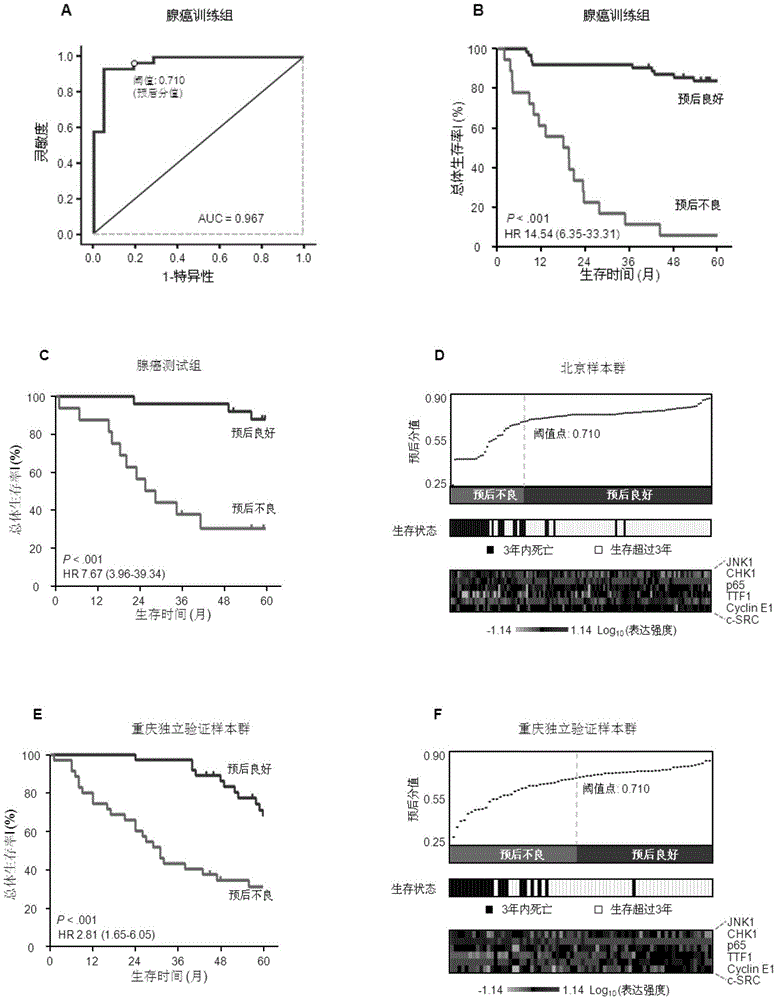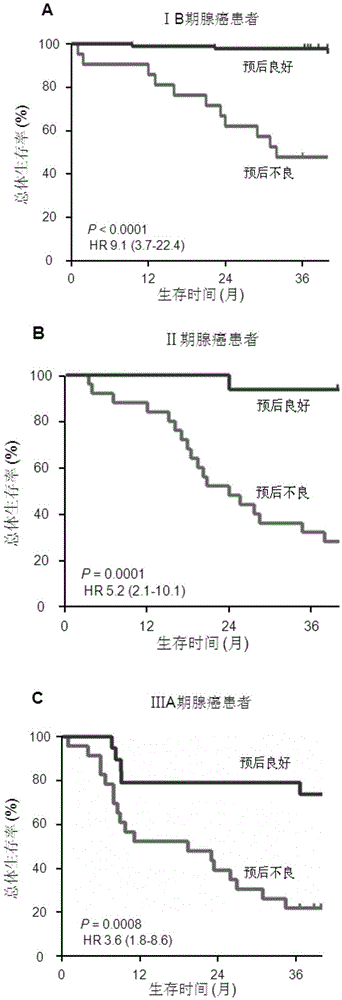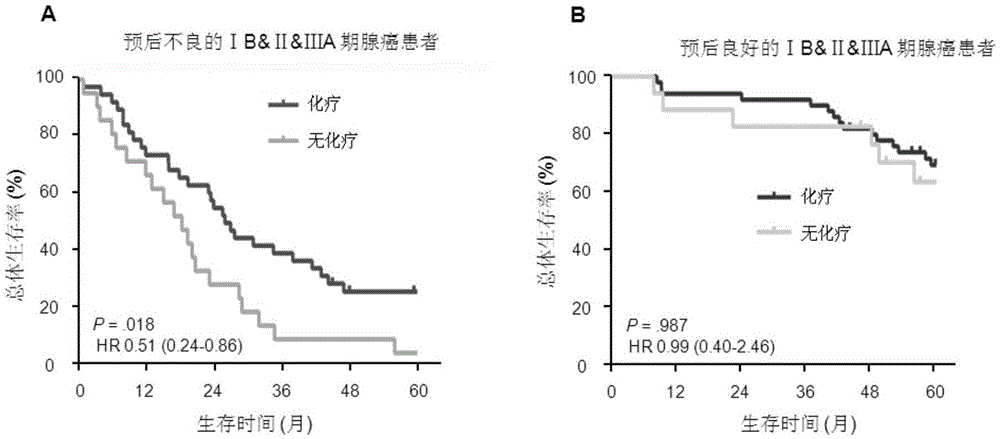System for predicting prognosis of patients with lung adenocarcinoma and judging benefit of adjuvant chemotherapy
A technique for lung adenocarcinoma, patients, applied in the field of biomedicine
- Summary
- Abstract
- Description
- Claims
- Application Information
AI Technical Summary
Problems solved by technology
Method used
Image
Examples
Embodiment 1
[0069] Example 1. Discovery of adenocarcinoma-associated protein profile, combined molecular marker model, non-small cell lung cancer prognosis judgment, P6-ADC method for prognosis of adenocarcinoma and validation of its effectiveness
[0070] 1. Discovery of adenocarcinoma-associated protein signatures
[0071] 1.1. Cases and samples
[0072] The formalin-fixed and paraffin-embedded human normal lung tissue samples were provided by Peking University People's Hospital and Southwest Hospital Tissue Bank. The formalin-fixed and paraffin-embedded lung tumor tissue samples were provided by the tissue banks of the Pathology Department of Peking University People's Hospital and the Pathology Department of Chongqing Southwest Hospital. The provider of the lung tumor tissue (ie, the patient) received radical surgery for lung cancer in the above-mentioned hospital from 2004 to 2010 and systematically. The present invention does not include the following cases: cases with malignant t...
Embodiment 2
[0132] Example 2, P6-ADC Prognosis Adenocarcinoma Method for Further Prognosis of TNM Graded Adenocarcinoma Patients
[0133] The method for further prognosing the adenocarcinoma patients graded by TNM is as follows: for any grade of adenocarcinoma patients graded by TNM (such as patients with stage IB adenocarcinoma), the expression score of P6-ADC is obtained according to the method in Example 1, Then the expression score is obtained according to the method in step 2.1 of Example 1 to obtain the prognosis score; and each prognosis score is determined according to the method in step 2.2 of Example 1 to determine whether the prognosis of the adenocarcinoma patient is good or poor.
[0134] The total adenocarcinoma sample was obtained by integrating the samples of the BJ group and the CQ group. The P6-ADC prognostic adenocarcinoma method can further divide each patient in the total adenocarcinoma sample into a poor prognosis group or a good prognosis group (stage IB P figure 2 ...
Embodiment 3
[0135] Example 3, P6-ADC prognostic adenocarcinoma method to predict whether patients with lung adenocarcinoma benefit from adjuvant chemotherapy
[0136] According to the guidelines issued by the American Society of Clinical Oncology (ASCO), postoperative adjuvant chemotherapy is recommended for patients with stage IB, II or IIIA non-small cell lung cancer, but data show that only a very small proportion of patients can benefit from chemotherapy.
[0137] Experiments have shown that the P6-ADC prognostic adenocarcinoma approach helps to identify those TNMIB and TNM II and IIIA patients who can really benefit from adjuvant chemotherapy. In the poor prognosis group, adjuvant chemotherapy significantly improved overall survival (hazard ratio 0.51, confidence interval 0.24-0.86; P=0.018; image 3 Middle A). In the P6-ADC prognostic adenocarcinoma group, adjuvant chemotherapy did not have any significant effect on prolonging the prognosis (hazard ratio 0.99, confidence interval 0...
PUM
 Login to View More
Login to View More Abstract
Description
Claims
Application Information
 Login to View More
Login to View More - R&D
- Intellectual Property
- Life Sciences
- Materials
- Tech Scout
- Unparalleled Data Quality
- Higher Quality Content
- 60% Fewer Hallucinations
Browse by: Latest US Patents, China's latest patents, Technical Efficacy Thesaurus, Application Domain, Technology Topic, Popular Technical Reports.
© 2025 PatSnap. All rights reserved.Legal|Privacy policy|Modern Slavery Act Transparency Statement|Sitemap|About US| Contact US: help@patsnap.com



